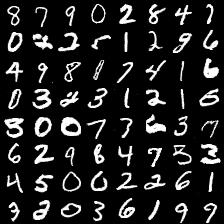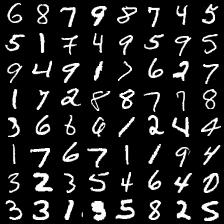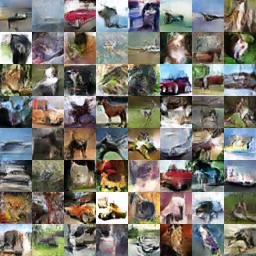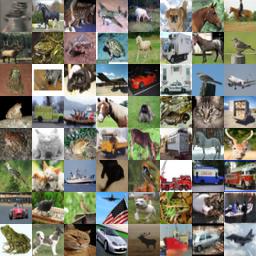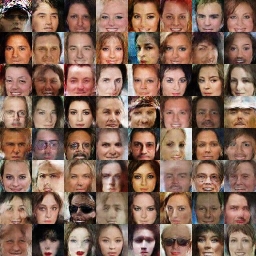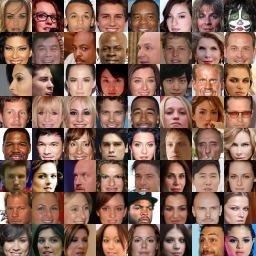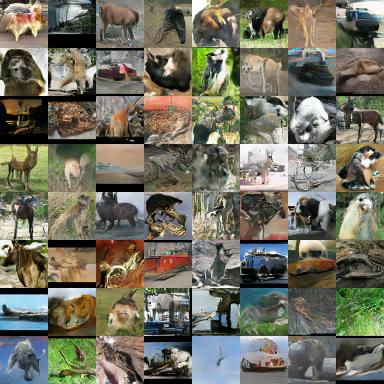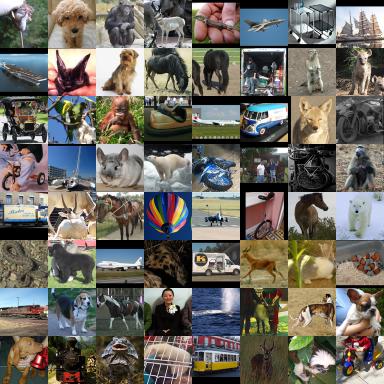Code accompanying our paper Generative Adversarial Autoencoder Networks (GAAN)
Numpy, scikit-learn, Tensorflow
We conduct experiments of our model with 1D/2D synthetic data, MNIST, CelebA, CIFAR-10 and STL-10 datasets.
In addition to GAAN, other methods, such as GAN, MDGAN, VAEGAN, WGAN-GP are provided in our code.
>> cd gaan_toy1d
>> python gan_toy1d.py
Quick video demos, you can reproduce easily these videos with our code:
GAN
WGANGP (WGAN-GP can match data distribution at some time, but diverged later)
VAEGAN
GAAN
Our 1D code is based on 1D demo references:
[1] https://github.com/kremerj/gan
[2] http://notebooks.aylien.com/research/gan/gan_simple.html
>> cd gaan_toy2d
>> python gaan_toy2d.py
We provide three different data layouts you can test on: 'SINE' 'PLUS' 'SQUARE'. Just change the parameter testcase in the code gaan_toy2d.py. For example:
testcase = 'SQUARE'
We provide our code for image datasets, such as: MNIST, CelebA and CIFAR-10.
>> cd gaan_image
>> python gaan_mnist.py
From left to right: Samples generated by our GAAN model (DCGAN for MNIST) and real samples.
Downloading cifar-10 from 'http://www.cs.toronto.edu/~kriz/cifar-10-python.tar.gz' and extracting it into the correct folder: eg. ./data/cifar10/
>> cd gaan_image
>> python gaan_cifar.py
From left to right: Samples generated by our GAAN model (DCGAN) and real samples.
Downloading CelebA from: https://drive.google.com/drive/folders/0B7EVK8r0v71pTUZsaXdaSnZBZzg and extract into the correct folder: eg. ./data/celeba/
>> cd gaan_image
>> python gaan_celeba.py
From left to right: Samples generated by our GAAN model (DCGAN) and real samples.
Downloading STL-10 from: http://ai.stanford.edu/~acoates/stl10/stl10_binary.tar.gz and extract it into a folder. Then, using ./modules/create_stl10.py to read binary file unlabeled_X.bin and save images into a specific folder: eg. ./data/stl-10/
>> cd gaan_image
>> python gaan_stl10.py
From left to right: Samples generated by our GAAN model (with standard CNN architecture [2] + hinge loss) and real samples (right).
FID scores of GAAN for CIFAR-10 and STL-10 datasets are summarized, following experiment setup of [2] with standard CNN architecture (FID is computed with 10K real images and 5K generated images). GAAN is trained with 200K iterations.
| Method | CIFAR-10 | STL-10 |
|---|---|---|
| WGAN-GP [1] | 40.2 | 55.1 |
| SN-GAN [2] | 29.3 | 53.1 |
| SN-GAN (hinge loss) [2] | 25.5 | 43.2 (2x updates) |
| GAAN | 28.23 | - |
| GAAN (hinge loss) | 22.95 | 36.19 (100K) |
Codes of hinge loss and ResNet architecture for CIFAR-10 and STL-10 will published soon.
If you use our code in your research, please cite our paper:
@article{trung2018gaan,
title={Generative Adversarial Autoencoder Networks},
author={Ngoc-Trung Tran and Tuan-Anh Bui and Ngai-Man Cheung},
journal={arXiv preprint arXiv:1803.08887},
year={2018}
}
2018/06/18:
- GAAN supports standard CNN architecture of SN-GAN [2].
- New FID results of standard CNN (+ hinge loss) are added.
[1] Ishaan Gulrajani, Faruk Ahmed, Martin Arjovsky, Vincent Dumoulin, Aaron Courville, "Improved Training of Wasserstein GANs", NIPS 2017.
[2] Takeru Miyato, Toshiki Kataoka, Masanori Koyama, Yuichi Yoshida, "Spectral Normalization for Generative Adversarial Networks", ICLR 2018.
